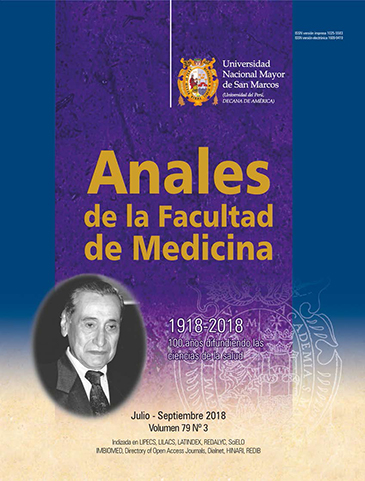Strategies to prevent and treat hypotension in cesareans under neuraxial anesthesia: survey of Peruvian anesthesiologists
DOI:
https://doi.org/10.15381/anales.v79i3.15320Abstract
To the Editor, Spinal anesthesia is considered the technique of choice in most cesareans, with hypotension being the most common adverse effect. The symptoms that frequently accompany hypotension are: nausea, vomiting, dyspnea and neonatal deleterious effects, among them, low Apgar score and acidosis in cord blood gas analysis1. The question is what is the most effective strategy to prevent and treat hypotension secondary to spinal anesthesia for caesarean section? It is crucial in obstetric anesthesia and the response is related to the physiological events that lead to hypotension. For many years the administration of a volume of crystalloids prior to the placement of spinal anesthesia was mandatory, just as ephedrine was considered the vasopressor of choice to treat such hypotension. The available scientific evidence shows us the opposite2.Downloads
Published
2018-10-09
Issue
Section
Cartas al Editor
License
Copyright (c) 2018 Anales de la Facultad de Medicina

This work is licensed under a Creative Commons Attribution-NonCommercial-ShareAlike 4.0 International License.
Those authors who have publications with this magazine accept the following terms:
- Authors will retain their copyrights and guarantee the journal the right of first publication of their work, which will be simultaneously subject to Creative Commons Attribution License that allows third parties to share the work as long as its author and its first publication this magazine are indicated.
- Authors may adopt other non-exclusive licensing agreements for the distribution of the version of the published work (eg, deposit it in an institutional electronic file or publish it in a monographic volume) provided that the initial publication in this magazine is indicated.
- Authors are allowed and recommended to disseminate their work over the Internet (eg: in institutional telematic archives or on their website) before and during the submission process, which It can produce interesting exchanges and increase quotes from the published work. (See El efecto del acceso abierto ).
How to Cite
1.
Oyola Vargas Y, Moreno Gonzales R, Vasquez Rojas G, Gutierrez Guevara JP, Sandoval Vegas M. Strategies to prevent and treat hypotension in cesareans under neuraxial anesthesia: survey of Peruvian anesthesiologists. An Fac med [Internet]. 2018 Oct. 9 [cited 2024 Jul. 17];79(3):262-3. Available from: https://revistasinvestigacion.unmsm.edu.pe/index.php/anales/article/view/15320















